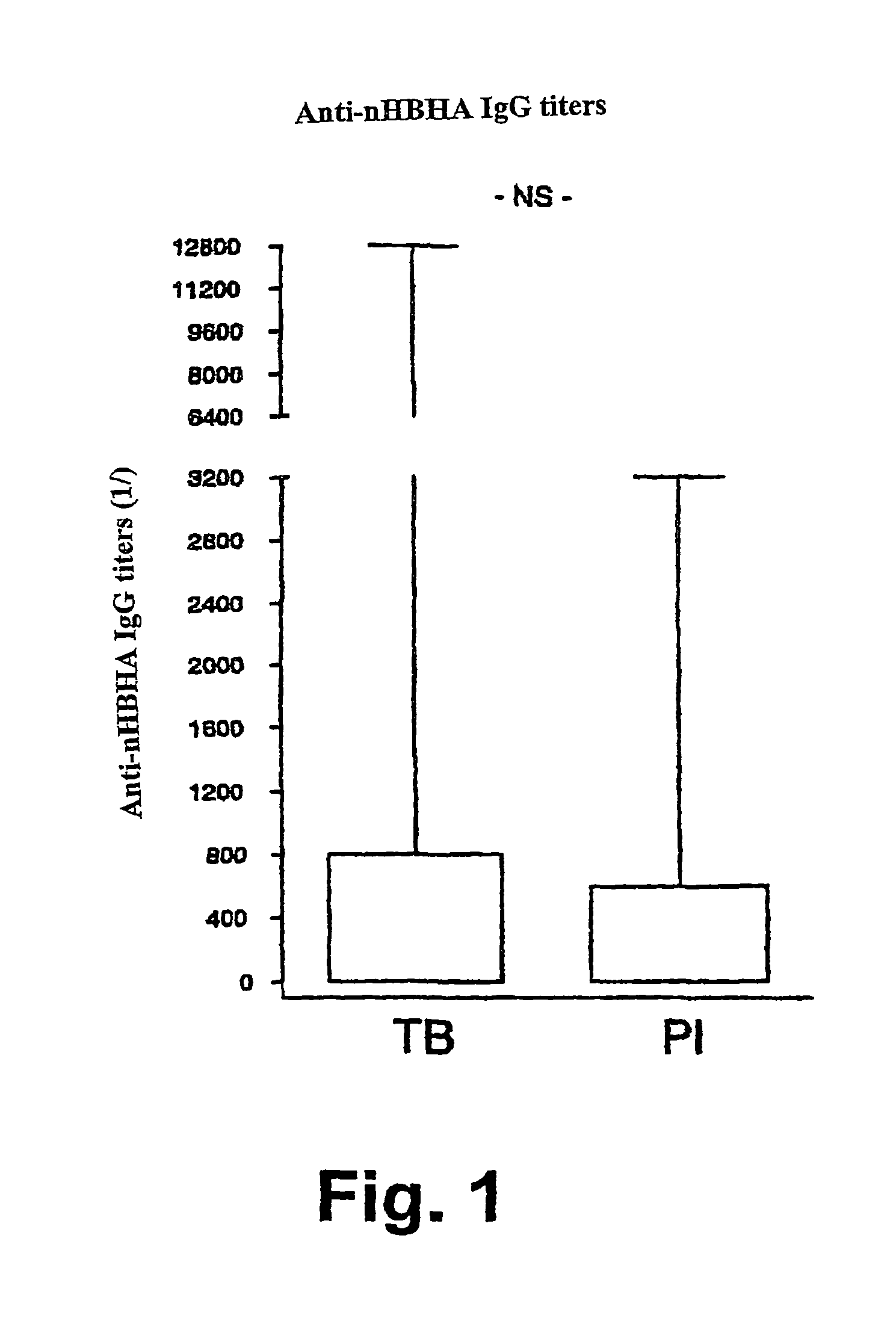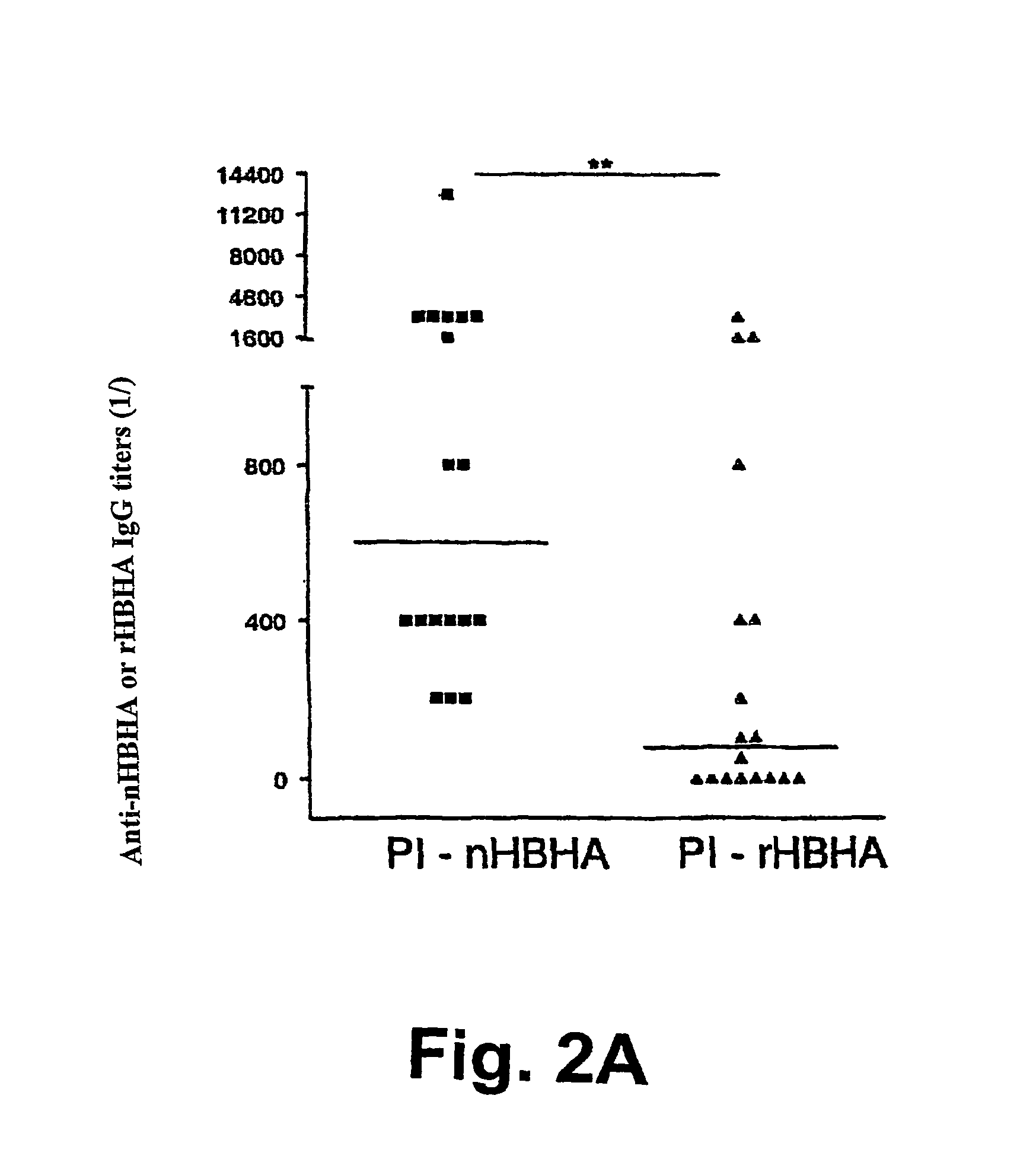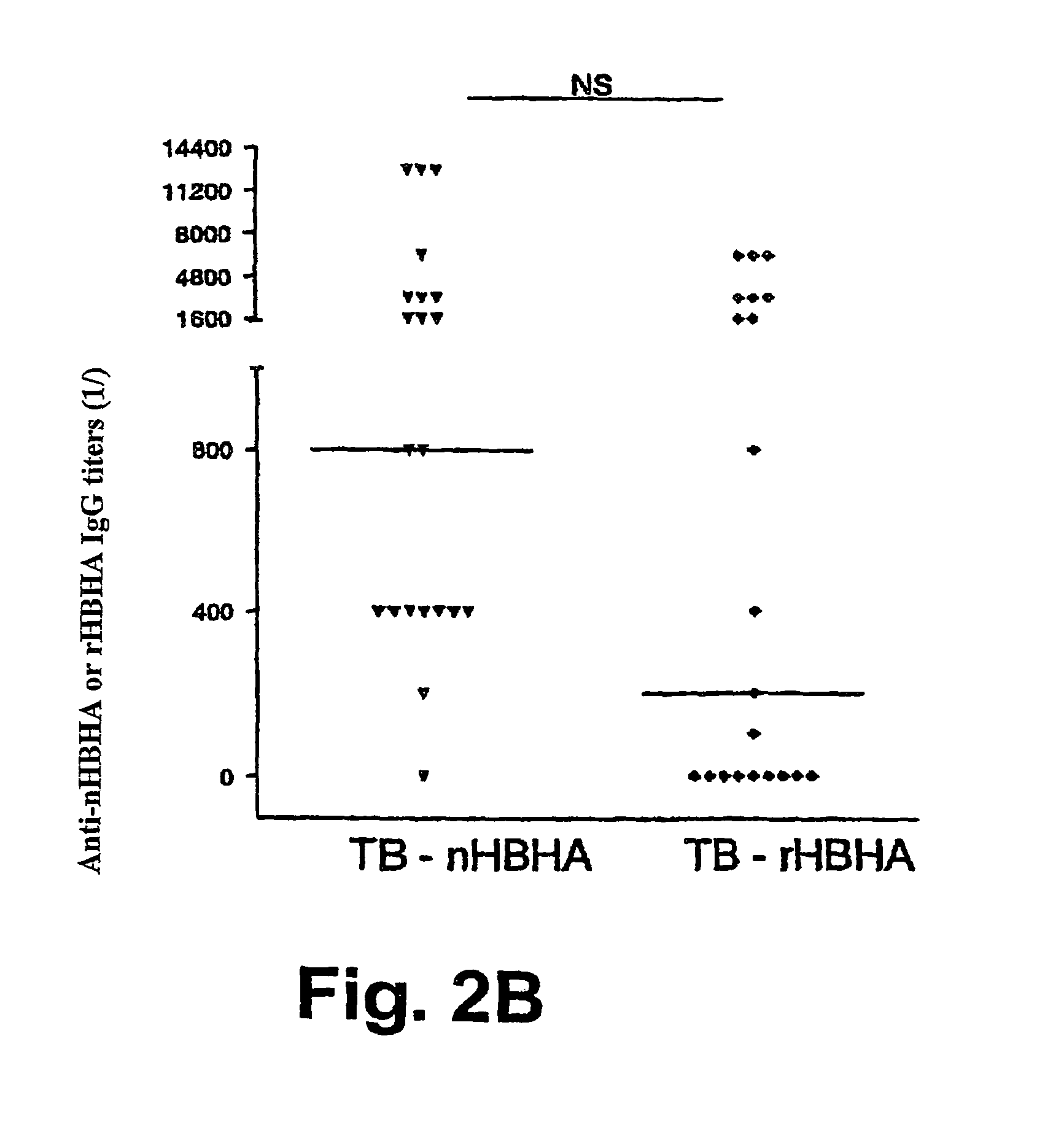Detection of tuberculosis and infection by Mycobacterium tuberculosis using HBHA
a technology of mycobacterium tuberculosis and detection field, which is applied in the field of detection of tuberculosis and infection by i > myco, can solve the problems of limiting the utility of culturing as a diagnostic test of the first intention, and affecting the detection accuracy
- Summary
- Abstract
- Description
- Claims
- Application Information
AI Technical Summary
Benefits of technology
Problems solved by technology
Method used
Image
Examples
example 1
Origin of Blood Samples
[0129]Blood samples were obtained from tuberculous patients and from patients with latent tuberculous after having obtained their consent. The tuberculous patients were selected on the basis of a positive direct examination and / or a positive culture for Mycobacterium tuberculosis. All subjects were enrolled before the end of the first three weeks of treatment. The subjects having a latent form of tuberculosis were selected on the basis of a positive delayed hypersensitivity test to tuberculin (diameter of induration over 18 mm at the time of diagnosis). An active form of tuberculosis was excluded on the basis of a normal thorax radiograph. All of the patients were seronegative for HIV and none had received immunosuppressor treatment. All of the subjects were living in Europe at the time of recruitment
example 2
Other Samples
[0130]Broncho-alveolar lavage fluid (BAL) was removed, by fibroscopy, after injecting about 200 ml of physiological water. The volume removed was then centrifuged (about 10 ml).
[0131]Pleural, articular, peritoneal, cephalorachidian and other fluids were collected in sterile syringes and were centrifuged as soon as they arrived at the laboratory.
[0132]For ganglia or other suspect masses, surgical exeresis was carried out. Upon its arrival at the laboratory, the anatomical fragment collected was morcellated and incubated in a culture medium to allow progressive release of cells from the tissue.
example 3
Antigens
[0133]The native form of HBHA (nHBHA) was purified from M. bovis BCG by heparin-sepharose chromatography followed by high pressure fluid chromatography (HPLC) as described elsewhere (14). An HPLC chromatogram and SDS-PAGE analysis after staining with Coomassie Blue proved that the preparation had no protein contamination. No traces of glycolipids were found using gas chromatography. The limulus test showed that the lipopolysaccharide concentration was less than 10 pg / ml.
[0134]The non methylated recombinant form (rHBHA) was purified from the E. coli strain (BL21(DE3)(pET-HBHA). The degree of methylation of the recombinant protein compared with that of the native protein was described in French patent FR-A-01 / 14953.
[0135]The truncated recombinant form of the C terminal portion (rHBHAΔC) was purified from the E. coli strain (BL21(DE3)(pET-rHBHAΔC). This truncated form rHBHAΔC was described in Pethe et al (2000 Journal of Biological Chemistry 275(19): 14273-14280, incorporated i...
PUM
| Property | Measurement | Unit |
|---|---|---|
| temperature | aaaaa | aaaaa |
| concentration | aaaaa | aaaaa |
| pH | aaaaa | aaaaa |
Abstract
Description
Claims
Application Information
 Login to View More
Login to View More - R&D
- Intellectual Property
- Life Sciences
- Materials
- Tech Scout
- Unparalleled Data Quality
- Higher Quality Content
- 60% Fewer Hallucinations
Browse by: Latest US Patents, China's latest patents, Technical Efficacy Thesaurus, Application Domain, Technology Topic, Popular Technical Reports.
© 2025 PatSnap. All rights reserved.Legal|Privacy policy|Modern Slavery Act Transparency Statement|Sitemap|About US| Contact US: help@patsnap.com



